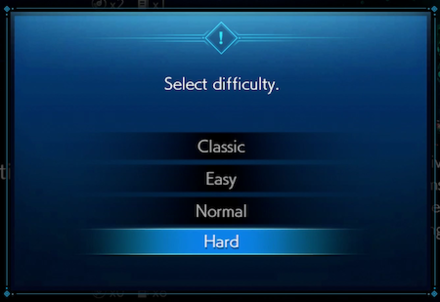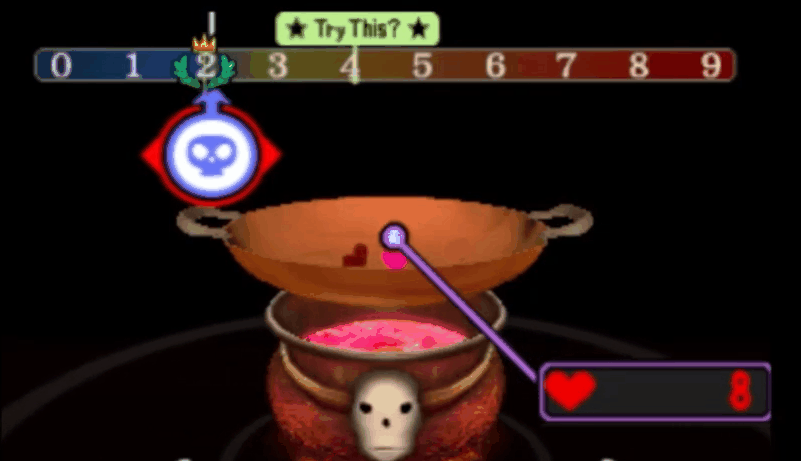Difficulty systems are a little notoriously obtuse. New players generally do not know what the real difference between Easy, Medium, and Hard modes are, as these are specific to individual games!

Hard mode in any given game (especially on Roblox) can wildly differ in actual challenge based on a player’s skill level. A player used to harder difficulty levels in DOOM might find harder difficulty in other game modes not challenging enough, and in the worst case could cause them to drop the game entirely. Even worse, newer players could give up on a game they would have enjoyed otherwise, solely because they pick the wrong difficulty setting and get frustrated.
Giving players the ability to find their flow state is huge for ensuring that players won’t drop the game for being too easy or too difficult, and helps engage them in the game and allows them to grow as a player, becoming more skilled as time goes on. An incredibly clever technique that I’ve seen comes from
Kid Icarus: Uprising for the Nintendo 3DS, developed by Masahiro Sakurai (father of Kirby and Super Smash Bros) called the Fiend’s Cauldron.
Fiend’s Cauldron

In Kid Icarus: Uprising, players collect Hearts as a currency by playing the game, and are the primary way to upgrade weapons and fuse new ones, fueling the outer game loop and engagement systems. Instead of leveraging finite difficulty modes, the game’s difficulty is put onto a spectrum between 0.0 and 9.0, where 9.0 is the most challenging.
In order to challenge a higher difficulty level, players wager Hearts; if they can complete the higher difficulty, they will earn back MORE than this amount of hearts and rarer weapon drops. However, if they die at any point, the player will be set down to a lower difficulty and lose a chunk of their rewards that they’ve earned.
This creates a great risk-reward mechanic that players
want to push on their own intrinsically. Because of the linear nature of the scale, players can up the difficulty by as much or as little as they feel comfortable with; there are 100 different degrees of difficulty here! Using Hearts as a wager gives players stakes in the battle in a way that traditional systems such as lives or score don’t always create. This is not a nebulous “more score for higher difficulty”, but is an explicit deal that the player gets to set the terms in.
Related Examples in Other Games
- The Halo series uses a series of modifiers called Skulls that players can pick and choose. For example, turning off their HUD elements results in a 10% bonus to score in that match. Combine multiple of these skulls to make an incredible challenge, or go all-in on the LASO challenge (Legendary, All Skulls On), where there isn’t anything harder to play in-game!
- Super Smash Bros. Ultimate, which was made by the same director (Masahiro Sakurai), also revisited this system. Using the same scale of 0.0 to 9.0, players would instead gamble their maximum score potential. Personally, I think that the biggest part of the Fiend’s Cauldron system is the cost of entry, and so while the system was almost identical, I feel like player stakes were lowered because it was all upside and no risk involved outside of retrying.
Core Game Essence / Key Points
- Tie an in-game difficulty choice directly to the reward potential awarded upon completion of the challenge.
- Players stake a resource that they currently have in order to obtain MORE of it or another resource. The more you stake, the harder the challenge, but the greater return on investment for success.
- Give players some amount of agency in the “terms of the deal”.
Applications
For a project that we’ve been working on at nextReality Games over the past few months, we’re planning on using this “Game Design Nugget™️” to address accessibility and challenge for players in one fell swoop.
The game is effectively an Abyssal-themed Tower of Hell, which creates it’s own design challenges. Abyssal is built around a key design pillar of “difficult but accessible platforming”, that the rewind system manages help players bridge the gap. However, Tower of Hell is a competitive style of platformer, and depends on players being on a mostly even playing field to encourage players to keep climbing. In order to balance these conflicting design goals, I’ve applied this principle to create a draft of a difficulty system to encourage players to grow into the challenge at their own pace.
- Easy Mode:
- Rewinding time is enabled (players can fall and rewind their position to before their fall)
- Checkpoints are enabled (players can teleport back to a checkpoint at the start of each section if they fall)
- 1x the clear bonus and rewards potential
- Normal Mode:
- Unlocks after a single Easy Mode Clear
- Rewinding time is DISABLED
- Checkpoints are enabled
- 2x the clear bonus and rewards potential
- Hard Mode:
- Unlocks after a single Normal Mode Clear
- Rewinding time is DISABLED
- Checkpoints are DISABLED
- 5x the clear bonus and rewards potential
This system allows for players to pick their level of comfort for the day. Even if they’re a more skilled player, they’re welcome to do their daily run on the 1x rewards to make the experience more relaxing. Players looking to challenge themselves might place lower in the race to the top because of the significantly increased challenge, but the huge burst in rewards potential should balance out any issues with placement they’d experience as they practice the game.
Further Reading
- An in-depth guide from Sakurai-san himself on this feature, and his own postmortem thoughts on how it went in Kid Icarus: Uprising: